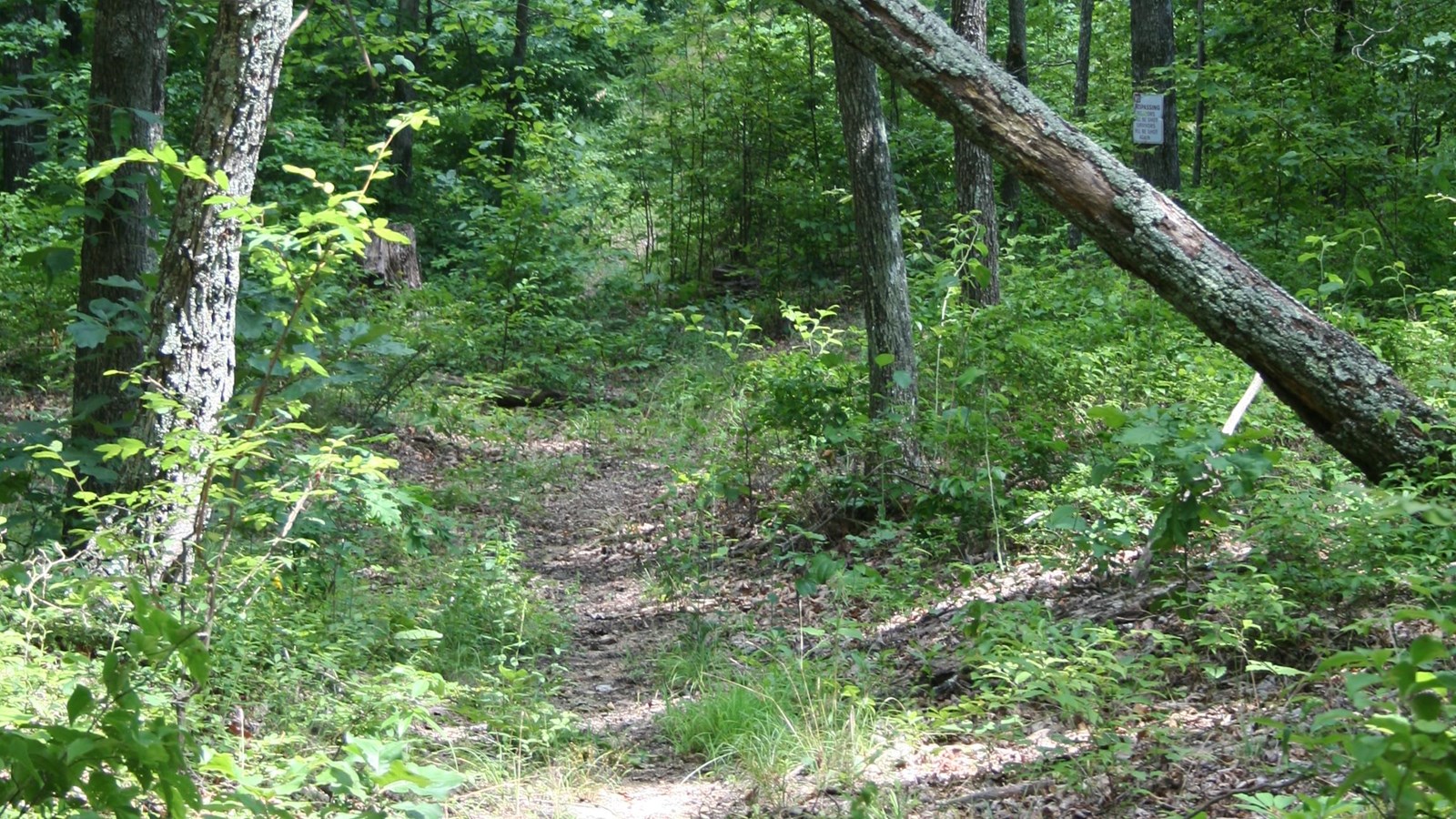Last updated: April 29, 2021
Place
Old Trace, Milepost 397.4

NPS Photo
Quick Facts
Location:
Natchez Trace Parkway, Milepost 397.4
Significance:
Old Natchez Trace
Amenities
3 listed
Historical/Interpretive Information/Exhibits, Parking - Auto, Parking - Bus/RV
Before 1805 the Chickasaw owned all the land in this vicinity. Only the Natchez Trace, part of which remains here, made inroads into tribal territory.
When the Chickasaw ceded the land to the United States in the early 1800s the Natchez Trace became a boundary. The land behind you became government property under the 1805 treaty. In 1816 the tribe ceded a much larger tract including the land in front of you.
In 1837 the Chickasaw were removed from their homeland. Chickasaw Removal is the most traumatic chapter in Chickasaw history. As a result of Congress’ Indian Removal Act, the Chickasaw people were forced to remove to Indian Territory. The foresight and skilled negotiating practices of Chickasaw leaders led to favorable sales of Chickasaw lands in Mississippi. This allowed the Chickasaw Nation, unlike other tribes, to pay for our own removal.
Chickasaw families were met with hardship and death along the Removal, traveling hundreds of miles in extreme cold and heat; however, Chickasaws suffered less than other tribes because they controlled their departures and chose favorable seasons to travel. This undoubtedly saved many lives that otherwise could have been lost.
Other tribes removed to Indian Territory were the Cherokee, Choctaw, Muscogee (Creek) and Seminole. The Chickasaws were one of the last to remove. In 1837, They signed the Treaty of Doaksville with the Choctaw Nation and purchased the right for the settlement of the Chickasaw people in their own district within Choctaw Territory. Most Chickasaws removed to Indian Territory from 1837-1851. However, Chickasaw families continued to arrive in Indian Territory up to the 1890s, as evidenced by Chickasaw tribal enrollment in the Dawes Rolls.
As the Chickasaw began to move into their district, they discovered Plains Indian tribes roaming freely across the lands. These tribes still lived a migratory lifestyle and made frequent raids on Chickasaw homesteads. The Plains Indian tribes did not understand the United States removing other tribes onto their historic homeland. To fulfill the treaty promise to protect the removed Southeastern tribes, the federal government built Fort Washita and Fort Arbuckle to maintain peace between the various tribes. Chickasaws still desired their own separate territory to restore governmental authority for their people and separate affairs from the Choctaws. In 1856, the Chickasaws separated from the Choctaws and created their own constitution for their own separate lands.
See Trail of Tears on the Natchez Trace Parkway for additional information.
When the Chickasaw ceded the land to the United States in the early 1800s the Natchez Trace became a boundary. The land behind you became government property under the 1805 treaty. In 1816 the tribe ceded a much larger tract including the land in front of you.
In 1837 the Chickasaw were removed from their homeland. Chickasaw Removal is the most traumatic chapter in Chickasaw history. As a result of Congress’ Indian Removal Act, the Chickasaw people were forced to remove to Indian Territory. The foresight and skilled negotiating practices of Chickasaw leaders led to favorable sales of Chickasaw lands in Mississippi. This allowed the Chickasaw Nation, unlike other tribes, to pay for our own removal.
Chickasaw families were met with hardship and death along the Removal, traveling hundreds of miles in extreme cold and heat; however, Chickasaws suffered less than other tribes because they controlled their departures and chose favorable seasons to travel. This undoubtedly saved many lives that otherwise could have been lost.
Other tribes removed to Indian Territory were the Cherokee, Choctaw, Muscogee (Creek) and Seminole. The Chickasaws were one of the last to remove. In 1837, They signed the Treaty of Doaksville with the Choctaw Nation and purchased the right for the settlement of the Chickasaw people in their own district within Choctaw Territory. Most Chickasaws removed to Indian Territory from 1837-1851. However, Chickasaw families continued to arrive in Indian Territory up to the 1890s, as evidenced by Chickasaw tribal enrollment in the Dawes Rolls.
As the Chickasaw began to move into their district, they discovered Plains Indian tribes roaming freely across the lands. These tribes still lived a migratory lifestyle and made frequent raids on Chickasaw homesteads. The Plains Indian tribes did not understand the United States removing other tribes onto their historic homeland. To fulfill the treaty promise to protect the removed Southeastern tribes, the federal government built Fort Washita and Fort Arbuckle to maintain peace between the various tribes. Chickasaws still desired their own separate territory to restore governmental authority for their people and separate affairs from the Choctaws. In 1856, the Chickasaws separated from the Choctaws and created their own constitution for their own separate lands.
See Trail of Tears on the Natchez Trace Parkway for additional information.
